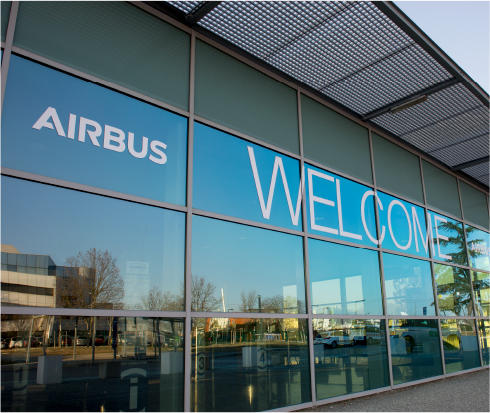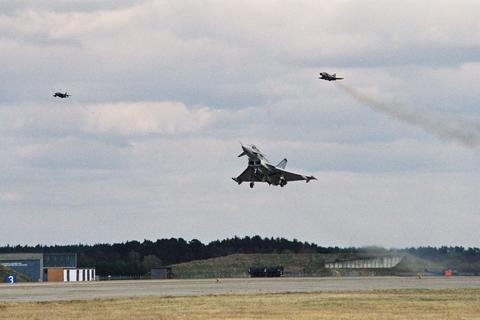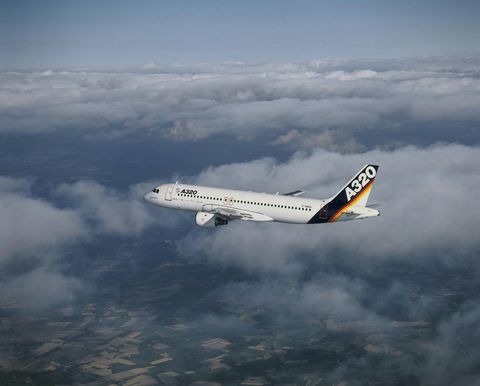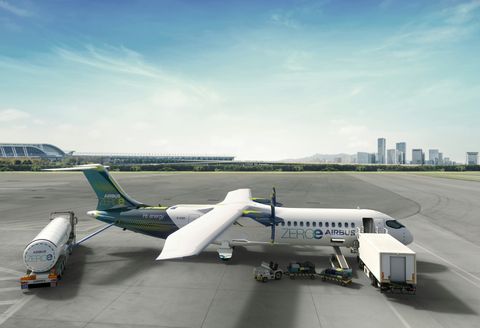New consortium to enable zero emission aviation to take off in Aotearoa New Zealand
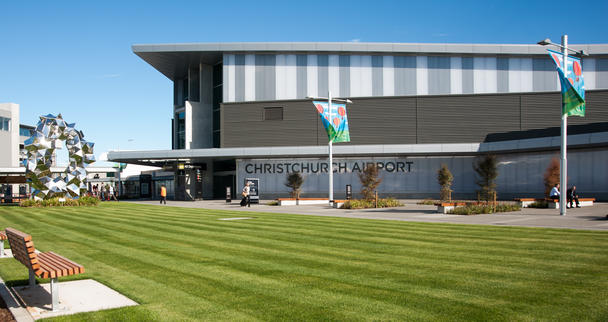
Six international businesses have launched a new consortium to bring zero-emission aviation to life in New Zealand.
Christchurch, NZ, 10 February 2023 - The Hydrogen Consortium’s vision is to support the country to pioneer the commercial deployment of green hydrogen-powered aircraft.
The partners are international aerospace leader Airbus, global green energy company Fortescue Future Industries (FFI), leading world airline Air New Zealand, next generation energy company Hiringa Energy, liquid hydrogen solution pioneers Fabrum and New Zealand’s Christchurch Airport.
The Hydrogen Consortium was launched at Christchurch Airport, which is developing a 400-hectare renewable energy precinct called Kowhai Park.
Speaking at the launch, Christchurch Airport chief executive Justin Watson said climate change has further strengthened the international aviation sector’s resolve to decarbonise.
“Major progress is being made,” Watson says. “There have been successful test flights of zero emission aircraft already. There are new sustainable aviation fuels that can cut emissions by up to 80% and a huge amount of research is going into how to commercialise these solutions.
“The Hydrogen Consortium will see some of the world’s best experts collaborate on one of the most promising zero emission fuels – green hydrogen.”
Airbus is working to develop and put into service the world’s first hydrogen-powered commercial passenger aircraft by 2035.
In close cooperation with its partners, Airbus will factor in aviation's requirement for hydrogen in New Zealand. Using its hydrogen hubs at airports concept, Airbus will engage with aviation and non-aviation players to perform a complete assessment of energy supply needs to enable the operation of hydrogen powered aircraft.
Airbus’ Vice President of the ZEROe Ecosystem Karine Guenan says the journey to sustainable aviation requires an entire ecosystem to be put into place – one that will involve key players from a variety of sectors.
"The consortium we are building brings together a number of pioneering partners with a common interest: to make hydrogen-powered aviation in New Zealand a reality."
Christchurch liquid hydrogen solutions company Fabrum recently designed the hydrogen-powered technology for the Emirates Team New Zealand chase boat (Chase Zero) and has developed lightweight liquid hydrogen fuel tank technology for aviation use.
Co-founder Christopher Boyle is in no doubt the future of clean aviation rests on the shoulders of green hydrogen.
“The consortium pulls together some of world’s best experts in green hydrogen – having all of these organisations around the same table will turbocharge what we all learn. Together we’ll make a big difference in taking zero emission aviation forward which is good news to anyone who wants to fly sustainably in the future,” said Christopher Boyle.
Hiringa Energy is a pioneering green hydrogen developer, producer and supplier.
It’s constructing key infrastructure to support New Zealand’s transition to green hydrogen in multiple transport sectors including aviation, marine and heavy road transport. Hiringa’s first four production and high-capacity refuelling stations are coming online in 2023, with nationwide expansion planned from 2024.
Its chief executive Andrew Clennett said green hydrogen adoption is accelerating around the world, and New Zealand is well positioned to be a leader in this space.
“There are green hydrogen-fuelled buses, trucks, trains and boats already in service - some of them we have been refuelling here in New Zealand, including the Emirates Team New Zealand chase boat. Aircraft are a key next step, and this consortium has formed to ensure these planes have the infrastructure and hydrogen supply they will need to take off here. Our team is very motivated to leverage our hands-on experience bringing green hydrogen to market to make this transition happen”
A focus on research; the potential for trial flights in New Zealand
Over the next six months the partners will work together to design a hydrogen ecosystem for aviation in New Zealand.
The first phase will focus on research, which will be completed by the end of 2023.
The consortium will develop a vision for hydrogen aviation in New Zealand, examine the hydrogen supply chain and its challenges, assess the local aviation market’s projected hydrogen needs to 2050, and develop a pathway of policies, regulations and incentives to promote the development of hydrogen aviation.
The second phase will focus on whether hydrogen aircraft test flights can be held in New Zealand.
Air New Zealand has two ambitious goals – to fly its first commercial demonstrator flight from 2026 and begin replacing its Q300 Turboprop fleet from 2030 with low emission aircraft.
The airline’s Chief Sustainability Officer Kiri Hannifin said the consortium’s work will be important to Air New Zealand achieving those ambitions.
“To fly hydrogen-powered aircraft in New Zealand we will need an aviation ecosystem that can support it. The Hydrogen Consortium brings together energy, aircraft, airline operator and airport expertise with the aim of bringing this to life. We can’t wait to see what we can achieve together,” said Ms Hannifin.
Fortescue Future Industries (FFI) CEO Mark Hutchinson said the coming together of such innovative organisations marked a significant moment in the pursuit of fossil fuel-free air travel.
“Fortescue Future Industries is a global green energy and technology business that will bring to the consortium its knowhow in mega-scale renewables and zero-emissions green hydrogen production and delivery,” Mr Hutchinson said. “We are on a mission to eliminate fossil fuels, including from the aviation industry, and green hydrogen is the key to achieving this.
“Green hydrogen and green energy is the practical, implementable solution we all need now and we must race to deliver it at scale. The consortium members all have extraordinary expertise in and commitment to the decarbonisation of air travel and together we believe we can develop a pathway to New Zealand becoming a global trailblazer in this pursuit,” concluded Mark Hutchinson.
You can find photos for media use here or by copying the below URL to your web browser: https://www.dropbox.com/sh/cy1lhxhcis52lzl/AADXR-q0o7SEDGYPPyXltkx6a?dl…
For further information please contact:
Air New Zealand
Jan McIntyre, jan.mcintyre@airnz.co.nz+64 27 512 7388
Christchurch Airport
Yvonne Densem, yvonne.densem@cial.co.nz+64 21 450 202
Fabrum
Maja Markun, Maja@fabrum.nz +64 22 487 7187
Fortescue Future Industries
Ben Spencer ben.spencer@fmgi.com.au+61 412 754 310
Hiringa Energy
Amy Browne, a.brown@hiringa.co.nz+64 21 588 465
BACKGROUND INFORMATION
Air New Zealand
airnewzealand.co.nz/about-air-new-zealand
Air New Zealand's story started in 1940, first taking to the skies between Auckland and Sydney on a flying boat.
Known for its warm Kiwi hospitality, today the airline has 104 operating aircraft ranging from Boeing 787-9 Dreamliners and Airbus A320s to ATRs and Q300s.
Air New Zealand has a well-connected domestic business, connecting customers and cargo to 20 different regions around New Zealand.
Internationally, the airline has direct flights to major cities across Australia, Asia, the Pacific Islands and the U.S., and through its strong relationships with alliance partners, offers customers more choice and convenience to connect further afield to hundreds of destinations.
Air New Zealand has a particular focus on sustainability and its Sustainability Framework helps guide the airline's efforts in tackling some of New Zealand's and the world's most complex challenges.
Flight NZ0 is the airline’s commitment to find a more sustainable way to connect with the world and reach its goal of net zero carbon emissions by 2050.
Christchurch Airport
christchurchairport.co.nz/about-us/
Christchurch Airport has been recognised as global leader in sustainability.
In 2020 it became the first airport in the world to reach the highest level of decarbonisation under the Airports Council’s International’s carbon accreditation programme.
Its greenhouse gas emissions have been independently audited every year since 2006 with Scope 1 emissions (those under its direct control) now nearly 90% lower than 2015 levels.
The airport’s sustainability approach is science-based with targets set to ensure it decarbonises at a rate that will keep global warming to 1.5 degrees (the target enshrined in the Paris Agreement). It is currently 14 years ahead of where it needs to be.
Enabling other businesses, particularly its airline partners, to decarbonise is a key focus and the airport is developing a renewable energy precinct, Kōwhai Park, to provide the green energy the new generations of electric and hydrogen aircraft will require.
Fabrum
Fabrum.nz
Fabrum was founded in Christchurch (NZ) in 2004 by Christopher Boyle and Hugh Reynolds. The company has a long history of innovation, precision engineering and delivering solutions that support sustainable existence.
Over its near 20-year history Fabrum has worked on a variety of high-profile projects – it collaborated with NASA on a Liquid Air life support package for astronauts and a CO2 sublimation project for the Mars lander program; with Rolls Royce to develop superconducting systems and has recently developed hydrogen-powered drive trains for Team Emirates New Zealand’s Chase Zero boat.
Fabrum has a strong background in aviation that includes projects to decarbonise the industry. It co-developed the world’s first electric aircraft engine for Magnix and built superconducting electric motors/rotors for SAFFRAN/Airbus.
The company is currently manufacturing green hydrogen systems for ground-based infrastructure at airports and also on-board fuel tanks to carry liquid hydrogen for zero emission flights.
Fortescue Future Industries (FFI) and Fortescue
fortescue.com
Fortescue Future Industries (FFI) is a global green energy company committed to producing green hydrogen, containing zero carbon, from 100 per cent renewable sources.
FFI is leading the green industrial revolution, developing technology solutions for hard-to-decarbonise industries, while building a global portfolio of renewable green hydrogen and green ammonia projects.
FFI is also leading the global effort to help decarbonise hard-to-abate sectors and is responsible for the proposed decarbonisation of one of the biggest resources companies in the world by 2030 – its parent company Fortescue Metals Group.
Established in 2003, Fortescue Metals Group Ltd (Fortescue) is a global leader in the resources and renewable energy industry.
A proud West Australian company, we are recognised for our culture, innovation and industry-leading development of infrastructure and mining assets.
Hiringa Energy
Hiringa.co.nz
Headquartered in Taranaki (New Zealand), Hiringa Energy Ltd was established in 2017 by a team of energy professionals with a passion to make a global difference and address climate change.
Our mission is to supply the world with green hydrogen, produced from renewable energy. One of the great hurdles to the adoption of any new fuel is a reliable production and supply network.
Hiringa Energy is developing high-capacity green hydrogen production and re-fuelling infrastructure across New Zealand with the first four stations under construction in Hamilton, Palmerston North, Auckland and Tauranga.
The infrastructure is designed to support large scale decarbonisation across our regions and sectors including heavy road transport, aviation and marine.
These first stations will be operational in 2023 and our plan is to have 100 stations throughout New Zealand by 2030.
Your contact
Sean Lee
Head of Communications - Airbus Asia-Pacific
